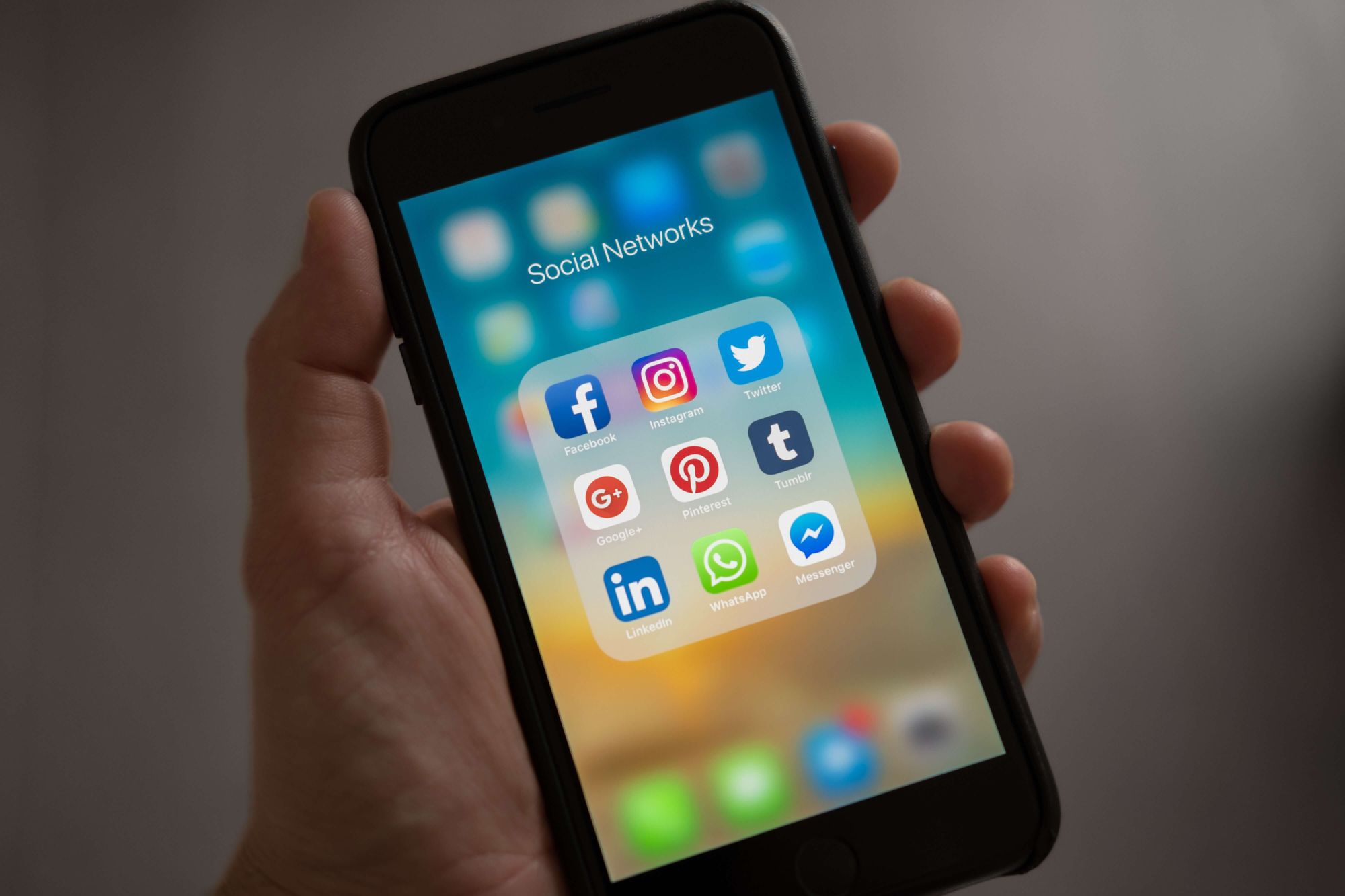Venturing into the world of social media as a cornerstone of brand strategy demands both creativity and strategic acumen. It's not just about posting content; it's about weaving the fabric of a community that resonates with the core of what your brand represents.
I'm Liz Dolinski, a fractional Chief Marketing Officer currently working with Foria, a women's intimate wellness brand. My approach has always been to treat social media not as a mere channel, but as the heartbeat of brand engagement.
In this article, I'll guide you through the essential principles CMOs should embrace to ensure their social media strategies are not only robust for today but agile enough to adapt to the unpredictable shifts of tomorrow.
The evolution of social media in brand marketing
Social media has transcended its initial role as a separate marketing channel to become an integral part of the media landscape. It's no longer just an add-on; it has merged seamlessly into the core of media communication.
The lines have blurred to the point where distinguishing between a broadcaster and a social media platform, like YouTube, is becoming increasingly difficult. Initially, new technologies are often sidelined, with specialists mastering these novel modes of communication. However, after a decade, they become mainstream and indistinguishable from other media forms.
Each social media platform has its unique function - YouTube has evolved to resemble a television channel, while others are more text, picture, or video-centric. The idea of pursuing a career solely in social media is becoming obsolete; the future lies in media as a whole. Social media is now a primary growth channel for consumer brands, demanding serious attention and strategy rather than being delegated to the youngest team member.
The stakes in social media are high, as demonstrated by incidents with major brands where their social media presence became synonymous with their overall brand identity. The nature of media has evolved into a two-way conversation, a shift that began 15 years ago with the internet's rise, transforming the landscape from one-way broadcasts to interactive dialogues.
Reflecting on the past 15 years, social media began as an organic platform without a strong paid component. This changed when Facebook altered its algorithm, necessitating brands to pay for visibility, disrupting the level playing field. The reliance on paid advertising was then shaken by Apple's privacy updates, which diluted Facebook's advertising dominance. This led brands to pivot towards content creators and influencers who had already cultivated their audiences.
Now, we're entering an era where AI is the new frontier. The lesson for brands is clear: stability in media strategy is a myth. Big tech companies are constantly evolving, and brands must be agile, ready to adapt to the next shift.
Currently, that shift is AI, and brands need to be proactive in integrating AI into their strategies, especially those heavily invested in content creator partnerships. The landscape is ever-changing, and staying ahead requires vigilance and adaptability.
Prefer to listen? Check out Liz's appearance on the CMO Convo podcast 👇
The role of AI in social media strategy and execution
It's crucial to distinguish between the strategy, planning, and execution aspects of social media. When it comes to execution, which involves the labor-intensive process of creating and posting content frequently, AI can be a game-changer.
The sheer volume of posts required - daily on platforms like Instagram, multiple times a day on TikTok, and up to ten times a day on Twitter - makes the execution phase ripe for AI integration. This part of social media work, which I view as low-value, is where AI can significantly reduce the burden, as companies currently invest heavily in this area.
However, when we shift to strategy, the value of human insight becomes irreplaceable. AI, as it stands, cannot craft a brand strategy. Social media is the embodiment of your brand strategy; it's about deciding what your brand represents.
The limits of AI in social media marketing
If you rely on AI for strategy, it may push you towards the average, leading to a bland brand. We've seen this with the rise of 'millennial branding,' where startups began to look indistinguishable from one another. AI tends to predict the most likely outcome based on existing data, which can result in a brand that lacks distinction and impact.
What truly defines a brand is its unique perspective, its ability to be provocative, and to resonate with humans by saying something unexpected. Marketing professionals excel in this strategic domain, where the goal is not to follow AI predictions but to stand out. Deciding on content themes, brand positioning, and how to engage with the community are tasks that require human creativity and intuition.
AI's potential lies in taking over the repetitive task of content creation that aligns with the brand strategy defined by humans. Many brands have teams dedicated to producing high volumes of content, and this is the component AI is set to transform.
But the core essence of a brand - the strategy that gives it a strong point of view - is still beyond AI's current capabilities. Perhaps in five years, we might revisit this conversation, but for now, the best approach is to let AI handle the executional details while humans focus on crafting a brand with a compelling and distinctive voice.
Authenticity and emotion in social media branding
The human brain is drawn to the unexpected. When interactions are predictable, they tend to fade into the background and fail to make an impact.
As a brand, particularly if you're a challenger or a startup, you can't afford to be predictable.
To ignite passion in consumers, you must evoke emotion, which is the catalyst for brand loyalty. This requires a deliberate choice about the emotions you want to evoke and the lengths you're willing to go to elicit them.
If you let AI algorithmically plan your brand's voice, you risk descending into the less desirable aspects of social media, which is not the goal for most founders.

Navigating social media censorship and brand strategy
The censorship on platforms like Twitter, where terms like "cisgender" are controversial, presents challenges for brands in the women's health space. These platforms control public discourse, and their decisions on acceptable conversations directly affect us.
There's a dichotomy here; on one hand, the lack of censorship allows for necessary discussions. On the other hand, it opens the door to the darker sides of free speech.
When Twitter relaxed its content moderation, it was a double-edged sword. Some brands welcomed the chance for more open dialogue, especially those frequently censored by Google and Facebook. However, these platforms are corporations with their own agendas, and their ultimate allegiance is to their shareholders. They engage in game theory, making strategic moves to capture more market share.
Meta's introduction of Threads as a potential "Twitter killer" is an example of this. They're attempting to transfer Instagram's model into a text-based format, just as they created Reels to compete with TikTok. As a brand, you have to consider the value of different platforms: is it the format or the audience and the style of interaction that's most valuable?
For small brands, the challenge is immense. The volume of content needed to be present on all platforms is overwhelming. This is where AI can be a significant asset. It can handle the long tail of content creation and automate processes, making it easier for brands to maintain a presence across various platforms.
AI's impact on content moderation and brand strategy
AI's role in content moderation is a double-edged sword. It's the same technology that helps streamline processes and content creation that also indiscriminately censors content, unable to discern the nuances between, say, pornography and healthcare. This creates significant barriers for brands like ours, especially in the health and wellness sectors, where discussions often involve topics that algorithms can mistakenly flag.
At Foria, we face similar challenges with our CBD products. Despite changes in regulations allowing for CBD advertising, the reality of algorithm-controlled moderation means our ads are still at risk of being censored, even when they comply with the rules.
The key for any brand is diversification. You can't afford to be overly reliant on a single platform. When Apple's privacy changes impacted Facebook's advertising model, many brands found themselves in a precarious position because they had built their entire customer base within that ecosystem.
Owning the customer relationship is crucial. If a significant portion of your acquisition comes from one platform, you're at their mercy. It's like being an Uber driver - Uber owns the customer, not you. For Foria, being present on multiple platforms is strategic. If one shuts us down, we have others to fall back on, ensuring we maintain control over our brand and customer communication.
The landscape is always shifting. The recent calls for content creators and influencers to join the writers' strike in the US is just one example of the potential for significant change. As we look to the future, the only certainty is change itself.
New platforms will emerge, and while they present more work for brands, they also offer more control. It's essential to leverage these opportunities to ensure that no single platform can dictate the success or failure of your business.
Embracing community beyond platforms
Conversation around community building is becoming increasingly central to brand strategy. While platforms like Reddit and Discord offer unique opportunities for community engagement, they are, at their core, social media platforms with their own sets of rules and idiosyncrasies. My role, particularly in managing Foria's brand presence, is to ensure that our community isn't confined to a single platform. It's a risky strategy to put all your eggs in one basket, so to speak.
For instance, if Foria's entire community were housed within Discord, any significant change to the platform could jeopardize our connection with our audience. That's why it's crucial to have a multi-platform approach, ensuring that the relationship we build with our customers is not dependent on any one service.
The goal is to create a brand community that is platform-agnostic, where customers are engaged with Foria as a brand, regardless of where they interact with us.
This approach is about reverting to the fundamentals of brand building. It's about ensuring that there are multiple touchpoints for engagement - whether that's through social media, email, or other channels. It's not just about pushing content out; it's about pulling customers in and fostering a genuine relationship with them. It's about ensuring that as they migrate from one platform to another, they carry their loyalty to your brand with them.
In the women's intimate care space, personal recommendations are incredibly powerful. When a product becomes a topic of conversation between friends, that's the pinnacle of brand engagement. It's about creating those word-of-mouth moments and ensuring that when a customer finishes a product, they return to us for their next purchase, not just opting for whatever is on sale elsewhere.
Platforms like Amazon have become quasi-social media spaces in their own right, with reviews and recommendations playing a significant role. But at the end of the day, it's about cultivating that 20% of your customer base that drives 80% of your business.
It's about loyalty, passion, and creating a brand experience that resonates so deeply that customers become brand ambassadors, sharing their positive experiences and driving the conversation around your products.
In essence, it's about leveraging technology not just to broadcast, but to build and nurture relationships that transcend the medium itself. It's about the interplay between brand and community, where each enriches the other, creating a symbiotic ecosystem that thrives on genuine connection and shared values.
Anticipating future impacts on social media strategy
Looking ahead, we're discussing the impact of AI on the market, but it's crucial to consider the digital-savvy consumer base, including boomers, millennials, and Gen Z. These consumers view their personal brands as significant and will likely leverage AI to influence their interactions with brands.
As a company, we must ponder how we'll adapt our content production and communication strategies in response to consumers' evolving behaviors. For instance, consumers are already using automation tools for convenience, like the shopping tool at Capital One that finds discounts for cardholders.
We need to be mindful that shifts in technology aren't just for companies; consumers will also adapt, potentially becoming more skeptical or even questioning the authenticity of customer service interactions. Ignoring the potential for consumers to react to new technologies is shortsighted. They will adapt their behaviors in response to these changes.
The implications of AI tools in the hands of consumers and trolls
There's also the reality of trolls and the potential harm they can inflict with AI tools, which they may already possess. As a brand, we face the challenge of imitation and the impact it can have on public perception.
This was a tactic initially seen in the political arena and now poses a risk to brands. It underscores the importance of fostering a strong connection with your community. A robust community can discern between imposters and the authentic brand, offering support when trolling occurs.
Previously, at Lunya, we experienced the strength of a passionate community firsthand. Fans would actively defend the brand against criticism, illustrating the power of community support. This dynamic reinforces the idea that the brand is truly owned by the customers, not the company.
We're here to cultivate a space, a meaning, and a stance in the world with our products, and our consumers are our partners in protecting and promoting that brand identity.

Synthesizing social media strategy for CMOs
It's crucial to shift the perception of social media from a peripheral channel managed by recent graduates to the heart of brand strategy. Social media and community building are not just facets of the brand; they are the essence.
The strategy should begin with defining the brand's core values and the community's perception and interaction with it. The various platforms are merely tools to support and amplify this essence.
As a CMO, I believe that social media and community engagement should constitute a significant portion of strategic planning. It's not just about the technology stack; it's about the vision and purpose of the brand.
Looking ahead, we must also consider the role of AI and automation in content creation and the shift towards a need for thinkers rather than doers within our organizations. The talent we seek should be capable of navigating a rapidly changing landscape, embracing flexibility and innovation.
In such a dynamic environment, it's not the specifics of the current technology or platform that matter most, but rather the overarching philosophy of adaptability and responsiveness to change.
Whether it's threads or another emerging platform, the focus should be on how to manage transitions and integrate new platforms effectively. The enduring lesson from these discussions is to cultivate a mindset that is prepared for and open to continuous evolution.
Social media is a tricky landscape to navigate right now, but it's much easier to navigate with some help. And there's no better help than a global network of CMOs and marketing leaders, which you can find on the CMO Alliance Community Slack channel.




